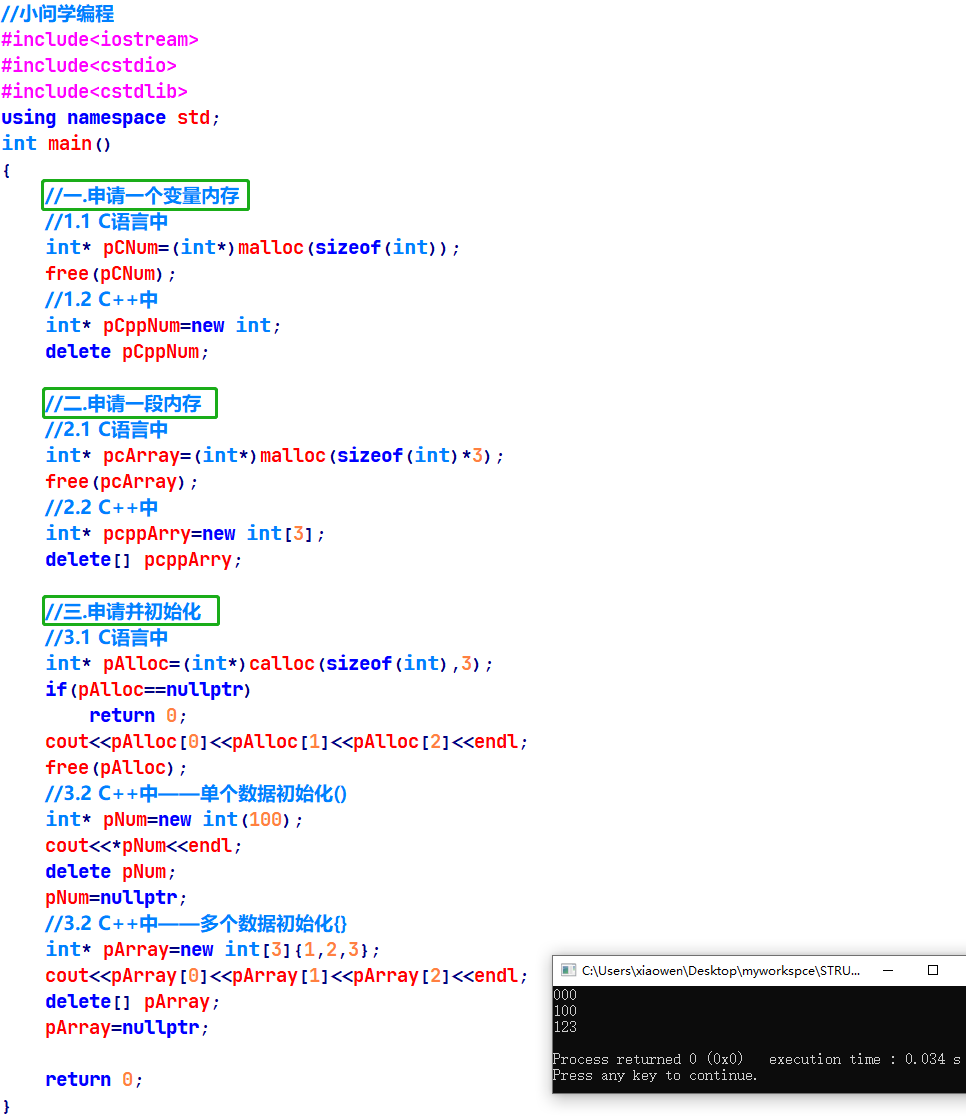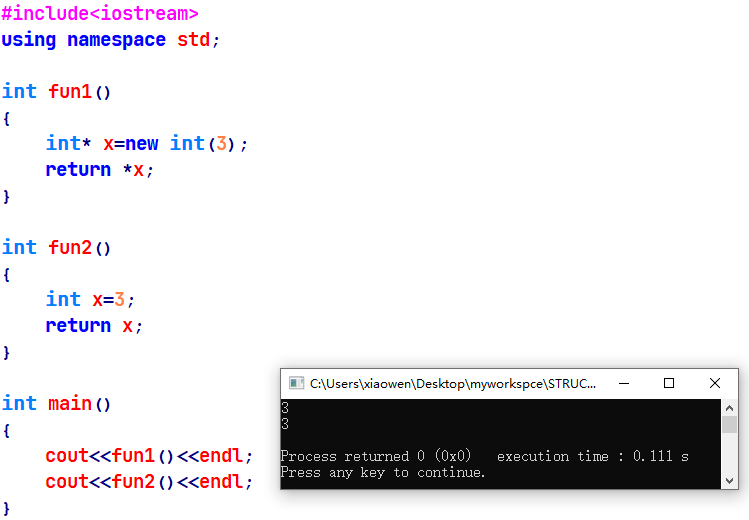相关博文:C++之new和delete探究
一.C和C语言申请内存
例1

附例1代码:
//小问学编程
#include<iostream>
#include<cstdio>
#include<cstdlib>
using namespace std;
int main()
{
//一.申请一个变量内存
//1.1 C语言中
int* pCNum=(int*)malloc(sizeof(int));
free(pCNum);
//1.2 C++中
int* pCppNum=new int;
delete pCppNum;
//二.申请一段内存
//2.1 C语言中
int* pcArray=(int*)malloc(sizeof(int)*3);
free(pcArray);
//2.2 C++中
int* pcppArry=new int[3];
delete[] pcppArry;
//三.申请并初始化
//3.1 C语言中
int* pAlloc=(int*)calloc(sizeof(int),3);
if(pAlloc==nullptr)
return 0;
cout<<pAlloc[0]<<pAlloc[1]<<pAlloc[2]<<endl;
free(pAlloc);
//3.2 C++中——单个数据初始化()
int* pNum=new int(100);
cout<<*pNum<<endl;
delete pNum;
pNum=nullptr;
//3.2 C++中——多个数据初始化{}
int* pArray=new int[3]{
1,2,3};
cout<<pArray[0]<<pArray[1]<<pArray[2]<<endl;
delete[] pArray;
pArray=nullptr;
return 0;
}
二.memory操作
例2

附例2代码
//小问学编程
#include<iostream>
#include<cstdio>
#include<cstdlib>
#include<assert.h>
#include<cstring>
using namespace std;
int main()
{
//四.内存池:允许我们在申请的内存上再做申请操作
char* Memory = new char[1024];
assert(Memory);
int* pInt = new(Memory + 0)int[3]{
1,2,3};//12字节存储整数
assert(pInt);
char* pChar = new(Memory + 12)char[20]{
"白日依山尽!" };
assert(pChar);
cout << pInt[0] << pInt[1] << pInt[2] << endl;
cout << ((int*)Memory)[0] << ((int*)Memory)[1] << ((int*)Memory)[2] << endl;
cout << pChar << endl;
cout << Memory + 12 << endl;
delete[] Memory;
Memory = nullptr;
return 0;
}
三.在栈上和堆上返回值区别
例3

附例3代码:
#include<iostream>
using namespace std;
int fun1()
{
int* x=new int(3);
return *x;
}
int fun2()
{
int x=3;
return x;
}
int main()
{
cout<<fun1()<<endl;
cout<<fun2()<<endl;
}